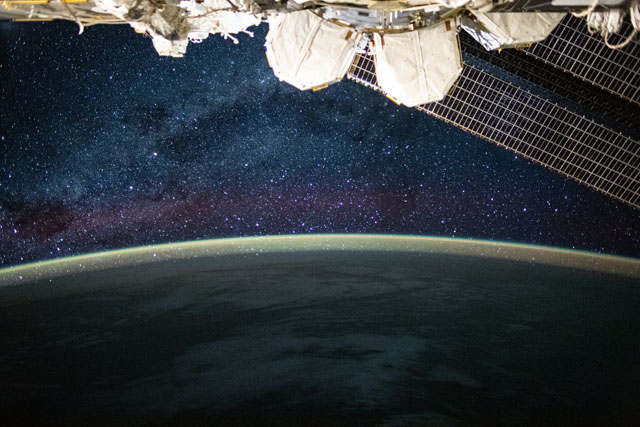Space Station Upkeep a Priority as Astrobee Sweeps the Interior

As a free-flying, cube-shaped robot dubbed Astrobee zipped through the International Space Station today, the Expedition 63 trio aboard was occupied with upkeep and experiment maintenance tasks.
Astrobee is autonomous, and therefore no additional burden to the busy schedule of Commander Chris Cassidy of NASA and Russian cosmonauts Anatoly Ivanishin and Ivan Vagner. Masterminded to assist the spare-faring crew with routine chores and give controllers on the ground an easy way to survey the station’s interior, the robot is currently flying about to capture additional video and imagery for later study.
Cassidy spent significant time in the Columbus laboratory module installing Fluidics hardware and setting it up for test runs. The experiment itself consists of three small transparent spheres with a centrifuge to move the liquids within. Data compiled from the investigation will one day improve applications in space, optimizing fuel systems, as well as on Earth, providing insight into how oceans work and the phenomenon of “rogue waves.” In addition, Cassidy replaced components in the Waste and Hygiene Compartment and performed life-support maintenance.
Vagner, meanwhile, helped with the life-support maintenance and serviced the Russian oxygen generator. With Ivanishin accompanying, they tackled cleaning air vents and dust filters to ensure the smooth running of the orbiting outpost. Smoke detectors within the Zarya module were also changed out during the housekeeping work.
The Russian crewmates contributed to the space station’s legacy as a microgravity testbed by furthering research objectives, with Ivanishin monitoring and identifying catastrophic events through the aid of Earth photography. Vagner added to the heart health study his counterpart had completed earlier in the week by setting up his own wearable monitor for a 24-hour electrocardiogram evaluation.
At 4:32 p.m. EDT, a planned reboost will put the orbiting laboratory in the proper positioning for the anticipated Soyuz launch of Expedition 64 on Oct. 14, followed by the landing of the current crew on Oct. 21.
Learn more about station activities by following the space station blog, @space_station and @ISS_Research on Twitter, as well as the ISS Facebook and ISS Instagram accounts.
from Space Station https://ift.tt/3hk5Wzz
Comments
Post a Comment